- Home
- Robert E. Howard
Sword Woman and Other Historical Adventures
Sword Woman and Other Historical Adventures Read online
THE FULLY ILLUSTRATED ROBERT E. HOWARD LIBRARY
from Del Rey Books
The Coming of Conan the Cimmerian
The Savage Tales of Solomon Kane
The Bloody Crown of Conan
Bran Mak Morn: The Last King
The Conquering Sword of Conan
Kull: Exile of Atlantis
The Best of Robert E. Howard Volume 1:
Crimson Shadows
The Best of Robert E. Howard Volume 2:
Grim Lands
The Horror Stories of Robert E. Howard
El Borak and Other Desert Adventures
Sword Woman and Other Historical Adventures
Sword Woman and Other Historical Adventures is a work of fiction.
Names, characters, places, and incidents are the products of the author’s imagination or are used fictitiously. Any resemblance to actual events, locales, or persons, living or dead, is entirely coincidental.
A Del Rey Trade Paperback Original
Copyright © 2011 by Robert E. Howard Properties, Inc.
All rights reserved.
Published in the United States by Del Rey, an imprint of The Random House Publishing Group, a division of Random House, Inc., New York.
DEL REY is a registered trademark and the Del Rey colophon is a trademark of Random House, Inc.
ROBERT E. HOWARD, DARK AGNES, and related names, logos, characters, and distinctive likenesses thereof are trademarks or registered trademarks of Robert E. Howard Properties, Inc., unless otherwise noted. All rights reserved.
Published by arrangement with Robert E. Howard Properties, Inc.
Library of Congress Cataloging-in-Publication Data
Howard, Robert E. (Robert Ervin), 1906–1936.
Sword woman and other historical adventures / Robert E. Howard ;
fully illustrated by John Watkiss.
p. cm.
eISBN: 978-0-345-52432-4
1. Adventure stories, American. 2. Historical fiction, American. I. Title.
PS3554.E43S96 2011
813′.54—dc22
2010039976
www.delreybooks.com
Cover design: Dreu Pennington-McNeil
Cover art: John Watkiss
Art Directors
Jim & Ruth Keegan
Editor
Rusty Burke
v3.1
Spears of Clontarf
first published in Spears of Clontarf, 1978
Hawks Over Egypt
first published in The Road of Azrael, 1979
The Outgoing of Sigurd the Jerusalem-Farer
first published in Verses in Ebony, 1975
The Road of Azrael
first published in Chacal, 1976
The Lion of Tiberias
first published in The Magic Carpet Magazine, July 1933
Gates of Empire
first published in Golden Fleece, January 1939
Hawks of Outremer
first published in Oriental Stories, Spring 1931
The Blood of Belshazzar
first published in Oriental Stories, Fall 1931
Red Blades of Black Cathay
first published in Oriental Stories, February–March 1931
The Sowers of the Thunder
first published in Oriental Stories, Winter 1932
The Skull in the Clouds
first published in The Howard Collector, Spring 1962
A Thousand Years Ago
first published in Night Images, 1976
Lord of Samarcand
first published in Oriental Stories, Spring 1932
Timur-lang
first published in The Howard Collector, Summer 1964
Sword Woman
first published in REH: Lone Star Fictioneer, Summer 1975
Blades for France
first published in Blades for France, 1975
The Shadow of the Vulture
first published in The Magic Carpet Magazine, January 1934
The Road of the Eagles
first published in Lord of Samarcand and Other Adventure Tales of the Old Orient, 2005
Untitled Fragment (The Track of Bohemund)
first published in The Road of Azrael, 1979
Untitled Synopsis (The Slave-Princess)
first published in The Howard Reader, 2003
Untitled Fragment (The Slave-Princess)
first published in The Howard Reader, 2003
Untitled Fragment (“He knew de Bracy …”)
first published in Lord of Samarcand and Other Adventure Tales of the Old Orient, 2005
Untitled Fragment (“The wind from the Mediterranean …”)
first published in Amra, November 1959
Recap of Harold Lamb’s “The Wolf Chaser”
first published in Lord of Samarcand and Other Adventure Tales of the Old Orient, 2005
Untitled Fragment (“The Persians had all fled …”)
first published in Lord of Samarcand and Other Adventure Tales of the Old Orient, 2005
The Sign of the Sickle
first published in A Rhyme of Salem Town and Other Poems, 2002
Mistress of Death
appears here for the first time
This book is dedicated to my deceased wife, Lorraine,
who I’m sure would have been pleased
that I finally got to illustrate a book by such a great writer.
—John Watkiss
Contents
Cover
Other Books by This Author
Title Page
Copyright
Dedication
Illustrations
Artist’s Foreword
Introduction
Spears of Clontarf
Hawks Over Egypt
The Outgoing of Sigurd the Jerusalem-Farer
The Road of Azrael
The Lion of Tiberias
Gates of Empire
Hawks of Outremer
The Blood of Belshazzar
Red Blades of Black Cathay
The Sowers of the Thunder
The Skull in the Clouds
A Thousand Years Ago
Lord of Samarcand
Timur-Lang
Sword Woman
Blades for France
The Shadow of the Vulture
The Road of the Eagles
Miscellanea
Untitled Fragment (The Track of Bohemund)
Untitled Synopsis (The Slave-Princess)
Untitled Fragment (The Slave-Princess)
Untitled Fragment (“He knew de Bracy …”)
Untitled Fragment (“The wind from the Mediterranean …”)
Recap of Harold Lamb’s “The Wolf Chaser”
Untitled Fragment (“The Persians had all fled …”)
The Sign of the Sickle
Mistress of Death
Appendices
Howard’s Journey
Notes on the Original Howard Texts
Illustrations
“Touch it not,” exclaimed Asmund
His mighty right hand held ready the stained sword
Cormac thundered his battle cry …
“They have crossed the Jordan!”
We fell to it, thrusting, slashing …
So I gave the horse the rein and rode at a reckless gallop
Artist’s Foreword
Robert E. Howard’s crowning glory in literature was Conan the Cimmerian. His epic tales written from a remote place in Texas were remarkable in character, landscape, and mood.
At the age of fourteen, I first came across his stories in paperback editions. At that time, as a young artist, I had been
studying anatomy with regard to drawing the human figure. The exotic, mysterious, action-packed stories of the Conan saga were a perfect vehicle for inventive figure renditions and stagings.
At that time I could only dream about working on Howard’s stories. Now I have realized that dream, illustrating Sword Woman and Other Historical Adventures.
I hope you enjoy Howard’s work as much as I enjoyed illustrating it.
—John Watkiss
2010
Introduction
Historical fiction has been a part of our literary heritage for almost as long as we have possessed the written word, since some forgotten scribe in the court of Rameses XI put pen to papyrus to create the “Report of Wenamon.” Over the centuries it became the province of skalds and poets; bards and playwrights plundered whole archives to find fodder for the ages, while historians and antiquarians used fictionalized history as a means of understanding long-vanished civilizations. Today, while its form and function as a genre has changed, the appeal of historical fiction remains undiminished. It is the literature of spectacle and pageantry; at its simplest it is pure entertainment wrapped in a veneer of respectability often denied to its close cousin, fantasy. In the hands of a master, however, historical fiction does more than entertain … it puts a distinctly human face on our collective past.
Robert E. Howard (1906–1936) was such a master. Though his professional career spanned but a little more than a decade, he wrote, by conservative estimate, some three million words of poetry and prose, much of it having an historical slant. Indeed, a love of times past ran deep in Howard’s veins; a survey of his correspondence reveals that virtually every letter between 1923 and 1936 makes some mention of his interest in things historical – from the Celtic migrations to the lives of local gunfighters. With this in mind, it’s relatively easy to make the case that even Howard’s non-historical writings, his tales of Conan of Cimmeria or Kull of Atlantis, are at heart historical fiction. Who can read Black Colossus, for instance, and not see the shadow of the Kingdom of Jerusalem in the plight of the tiny city-state of Khoraja? Does not the blood-feud in Red Nails echo the equally bloody Lincoln County War? Such parallels abound in Howard’s fiction – some tenuous, others flare-bright and obvious.
The stories collected in this volume, however, are solidly historical. They owe their genesis to Howard’s literary patron and Weird Tales editor Farnsworth Wright, who solicited the young Texan in the summer of 1930 to contribute to his newest pulp magazine, Oriental Stories: “I especially want historical tales,” Wright’s letter stated, “tales of the Crusades, of Genghis Khan, of Tamerlane, and the wars between Islam and Hindooism.” This was a welcome opportunity for Howard, and he seems to have wasted little time in acting upon it.
“There is no literary work, to me, half as zestful as rewriting history in the guise of fiction,” he commented in a letter to H. P. Lovecraft. And indeed, Howard’s zest, his passion, is evident in every detail and turn of phrase. These stories rank among REH’s finest – lean and descriptive, with headlong plots and a rogues’ gallery of characters who embody the kind of grim fatalism that has become a hallmark of his work. They span the breadth of the Middle Ages – from war-torn eleventh-century Ireland (Spears of Clontarf) to sixteenth-century Ottoman Crimea (The Road of the Eagles) – and they explore a similar theme, what Howard called his “continual search for newer barbarians, from age to age.” The violent clash of civilizations and its tragic consequences fascinated Howard, as did the stoic heroism that arises in the face of inescapable doom. These themes crop up often in REH’s oeuvre, in the travels of Solomon Kane, in the knife’s-edge maneuverings of Francis Xavier Gordon, and in the determined resistance of Bran Mak Morn. But here, in his stories of Outremer and the Old Orient, Howard most eloquently questions the dominance of barbarism over civilization – a question he would ultimately answer in 1934, in the final paragraph of one of his most celebrated tales, Beyond the Black River:
Barbarism is the natural state of mankind … civilization is unnatural. It is a whim of circumstance. And barbarism must always ultimately triumph.
Though passionate about his material and confident in his ability to spin a yarn, Howard nonetheless felt that the writing of historicals exposed one of his great faults to the world: “My knowledge of the Orient is extremely sketchy, and I have to draw on my imagination to supply missing links which I can’t learn in the scanty references at my command.” And though he seems to have considered the introduction of imagination into historical fiction to be a weakness, it is that selfsame imagination that gives these stories such a dramatic flair. Howard’s prose has the power to bring history to life – grim and vicious life, but life all the same; he had a poet’s eye for evoking sensations that surely must have existed, even if no mention is made of them in the historical narrative – from the color of the night sky over a sacked and burning citadel to the taste of blood and gunpowder to the bitter stink of death that hangs in the morning air. When woven into the skein of history, these dollops of imagination elevate the rote recitation of dates and deeds into a potent form of art.
Howard bolstered his imagination by reading, widely and voraciously – no mean feat in Depression-era rural Texas. In his ongoing correspondence with fellow Weird Tales author H. P. Lovecraft, Howard lamented the dearth of culture in West Texas, stating that “… it is almost impossible to obtain books on obscure and esoteric subjects anywhere in the state.” Despite the difficulties, Howard amassed a vast store of historical knowledge, both for the American Southwest and for lands far-flung. He counted Sir Walter Scott among his favorite authors, along with Talbot Mundy, Stanley Lane-Poole, and the much-esteemed Harold Lamb. And from every one, both fiction and nonfiction, he took away something with which to inform his own work.
Absent first-hand experiences garnered through travel, or the where-withal to perform one’s own research in situ, cannibalizing and absorbing the works of others is a time-honored tradition among writers. Every book, story, and article one reads has the potential to supply a phrase or fact, a description or a bit of color. Of course, we should not confuse this with plagiarism; a good author – and Howard was one of the best – takes only inspiration, recasting the actual words to suit his own voice, his own style. Gates of Empire, included in this volume, boasts a perfect example of this tradition.
The scene is thus: in twelfth-century Cairo, emissaries of the Crusader King Amalric of Jerusalem, accompanied by that Falstaffian rogue, Giles Hobson – perhaps the most unique protagonist Howard ever created – have been granted an audience with the reclusive Fatimid Caliph of Egypt. Their escort is the wily vizier, Shawar …
At the gates of the Great East Palace the ambassadors gave up their swords, and followed the vizier through dim tapestry-hung corridors and gold arched doors where tongueless Sudanese stood like images of black silence, sword in hand. They crossed an open court bordered by fretted arcades supported by marble columns; their ironclad feet rang on mosaic paving. Fountains jetted their silver sheen into the air, peacocks spread their iridescent plumage, parrots fluttered on golden threads. In broad halls jewels glittered for eyes of birds wrought of silver or gold. So they came at last to the vast audience room, with its ceiling of carved ebony and ivory. Courtiers in silks and jewels knelt facing a broad curtain heavy with gold and sewn with pearls that gleamed against its satin darkness like stars in a midnight sky.
While The Arabian Nights could easily have inspired Howard’s sumptuous vision in the above passage, it is in fact rigorously historical – the details recorded at Amalric’s behest by his friend and confessor, Archbishop Guillaume de Tyr, in his Latin history of the Kingdom of Jerusalem, Historia Rerum in Partibus Transmarinis Gestarum (A History of Deeds Done Beyond the Sea). The Historia was rare in the 1930s – a modern English translation did not come out until 1943 – and only slightly less rare today. So where did Howard encounter it? In answer, we need only turn to the works of two of REH’s favorite writers: Harold Lamb and S
tanley Lane-Poole. Both men read Latin and traveled to the lands they wrote about. Lamb, an American adventure writer, split his time between fiction and non-fiction; Lane-Poole, a British archaeologist and Orientalist, wrote non-fiction histories with a storyteller’s eye. Both men wrote extensively on the Crusades. In their books, Howard no doubt found limitless inspiration.
Weigh the passage from Gates of Empire against this, Lamb’s version of the Caliph’s opulent palace, from The Crusades: the Flame of Islam:
The Fatimid kalif lived in guarded seclusion. Sudani swordsmen filled the corridors of the Great Palace, and paced the mosaic floors of the antechambers, by the marble fountains where peacocks strutted and parrots screamed. The audience hall glistened like a gigantic treasure vault with its ceiling of carved wood inlaid with gold, and its inanimate birds fashioned of silver and enamel feathers and ruby eyes. But the kalif was hidden from the eyes of the curious by a double curtain of gilt leather.
Now, place both against an excerpt from Stanley Lane-Poole’s Saladin and the Fall of the Kingdom of Jerusalem, which incorporates both the colorful description of the palace and the mission of the ambassadors – much of it in the words of Guillaume de Tyr, himself:
The introduction of Christian ambassadors to the sacred presence, where few even of the most exalted Moslems were admitted, was unprecedented; but Amalric was in a position to dictate his own terms. Permission was granted, and Hugh of Cæsarea with Geoffrey Fulcher the Templar were selected for the unique embassy. The vezir himself conducted them with every detail of oriental ceremony and display to the Great Palace of the Fatimids. They were led by mysterious corridors and through guarded doors, where stalwart Sudanis saluted with naked swords. They reached a spacious court, open to the sky, and surrounded by arcades resting on marble pillars; the panelled ceilings were carved and inlaid in gold and colours; the pavement was rich mosaic. The unaccustomed eyes of the rude knights opened wide with wonder at the taste and refinement that met them at every step;– here they saw marble fountains, birds of many notes and wondrous plumage, strangers to the western world; there, in a further hall, more exquisite even than the first, “a variety of animals such as the ingenious hand of the painter might depict, or the license of the poet invent, or the mind of the sleeper conjure up in the visions of the night,– such, indeed, as the regions of the East and the South bring forth, but the West sees never, and scarcely hears of.” At last, after many turns and windings, they reached the throne room, where the multitude of the pages and their sumptuous dress proclaimed the splendour of their lord. Thrice did the vezir, ungirding his sword, prostrate himself to the ground, as though in humble supplication to his god; then, with a sudden rapid sweep, the heavy curtains broidered with gold and pearls were drawn aside, and on a golden throne, robed in more than regal state, the Caliph sat revealed.

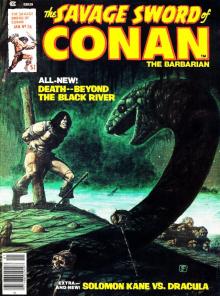 Beyond the Black River
Beyond the Black River Gods of the North
Gods of the North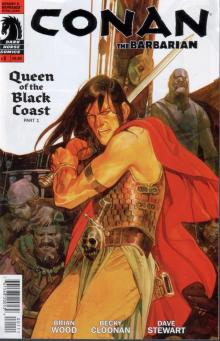 Queen of the Black Coast
Queen of the Black Coast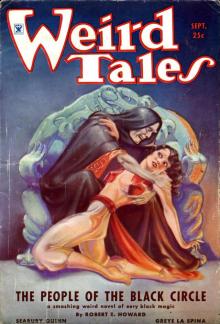 The People of the Black Circle
The People of the Black Circle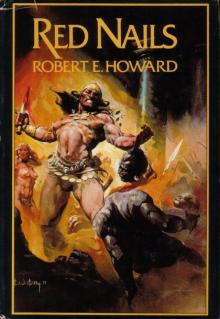 Red Nails
Red Nails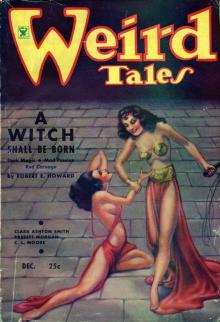 A Witch Shall Be Born
A Witch Shall Be Born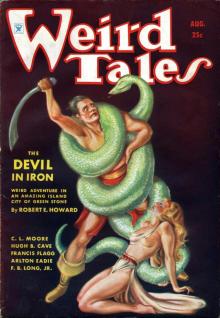 The Devil in Iron
The Devil in Iron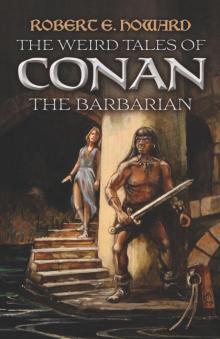 The Weird Tales of Conan the Barbarian
The Weird Tales of Conan the Barbarian The Bloody Crown of Conan
The Bloody Crown of Conan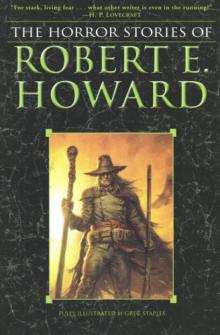 The Horror Stories of Robert E. Howard
The Horror Stories of Robert E. Howard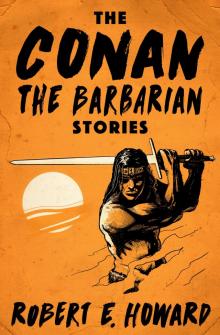 Conan the Conqueror
Conan the Conqueror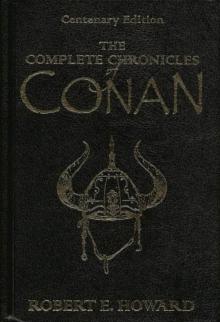 Conan the Barbarian
Conan the Barbarian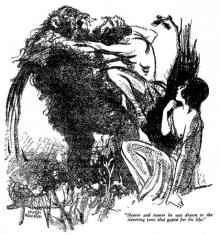 Shadows in the Moonlight
Shadows in the Moonlight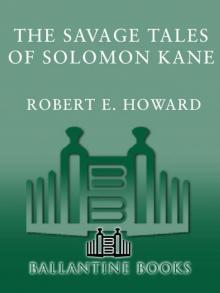 The Savage Tales of Solomon Kane
The Savage Tales of Solomon Kane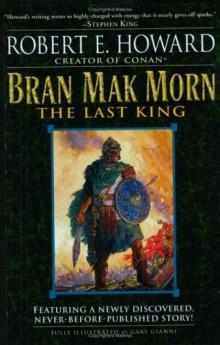 Bran Mak Morn: The Last King
Bran Mak Morn: The Last King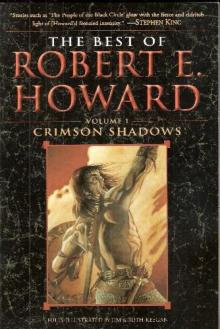 The Best of Robert E. Howard Volume One: Crimson Shadows
The Best of Robert E. Howard Volume One: Crimson Shadows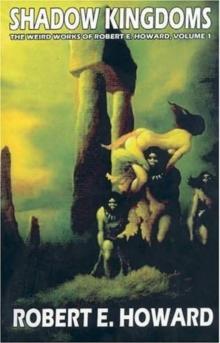 The Best of Robert E. Howard: Crimson Shadows (Volume 1)
The Best of Robert E. Howard: Crimson Shadows (Volume 1)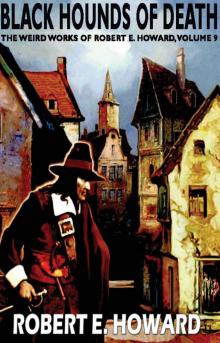 Black Hounds of Death
Black Hounds of Death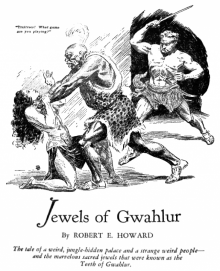 Jewels of Gwahlur
Jewels of Gwahlur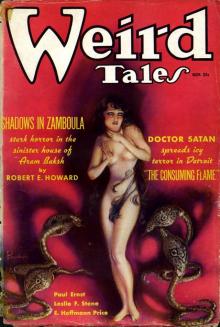 Shadows in Zamboula
Shadows in Zamboula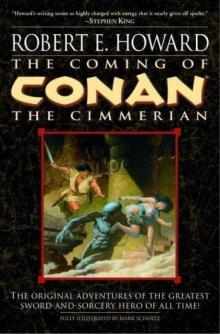 The Coming of Conan the Cimmerian
The Coming of Conan the Cimmerian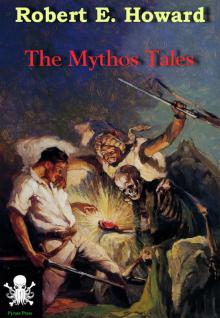 The Mythos Tales
The Mythos Tales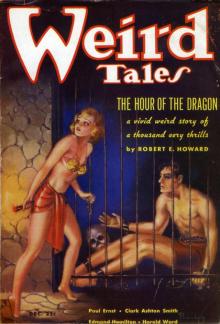 The Hour of the Dragon
The Hour of the Dragon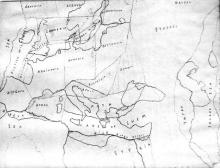 The Hyborian Age
The Hyborian Age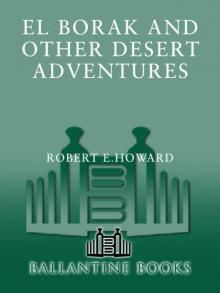 El Borak and Other Desert Adventures
El Borak and Other Desert Adventures The Best of Robert E. Howard Volume 1 The Best of Robert E. Howard Volume 1
The Best of Robert E. Howard Volume 1 The Best of Robert E. Howard Volume 1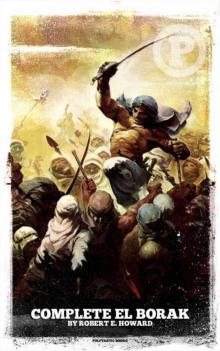 El Borak: The Complete Tales
El Borak: The Complete Tales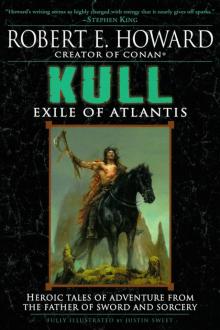 Kull: Exile of Atlantis
Kull: Exile of Atlantis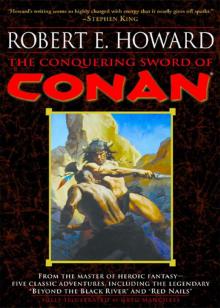 The Conquering Sword of Conan
The Conquering Sword of Conan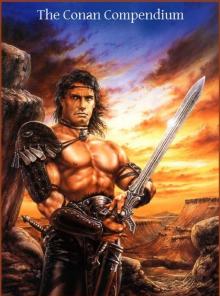 The Conan Compendium
The Conan Compendium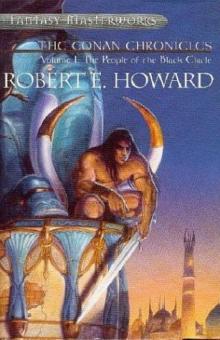 The Conan Chronicles: Volume 1: The People of the Black Circle
The Conan Chronicles: Volume 1: The People of the Black Circle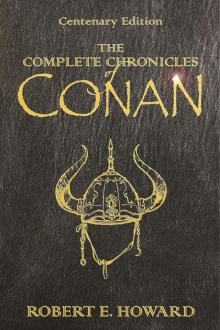 The Complete Chronicles of Conan: Centenary Edition
The Complete Chronicles of Conan: Centenary Edition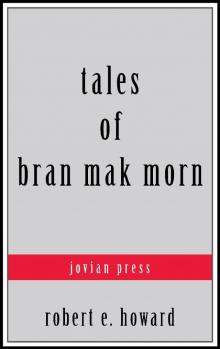 Tales of Bran Mak Morn (Serapis Classics)
Tales of Bran Mak Morn (Serapis Classics) Delphi Works of Robert E. Howard (Illustrated) (Series Four)
Delphi Works of Robert E. Howard (Illustrated) (Series Four)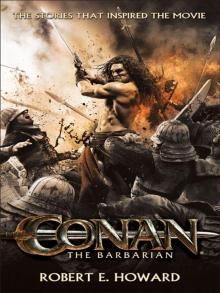 Conan the Barbarian: The Stories That Inspired the Movie
Conan the Barbarian: The Stories That Inspired the Movie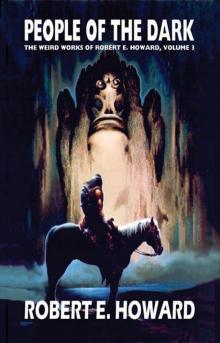 People of the Dark Robert Ervin Howard
People of the Dark Robert Ervin Howard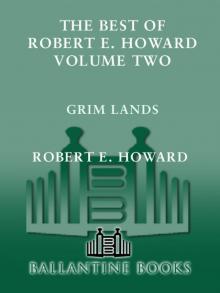 Grim Lands
Grim Lands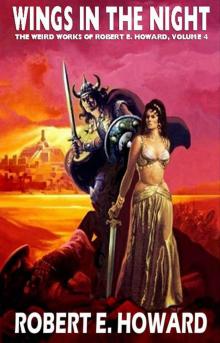 Wings in the Night
Wings in the Night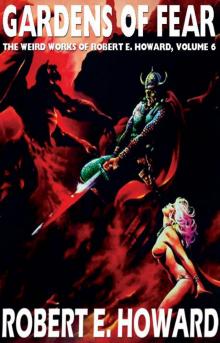 Gardens of Fear
Gardens of Fear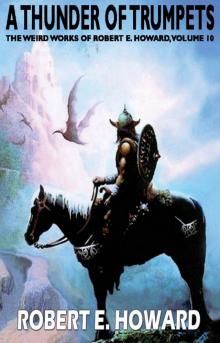 A Thunder of Trumpets
A Thunder of Trumpets Detective of the Occult
Detective of the Occult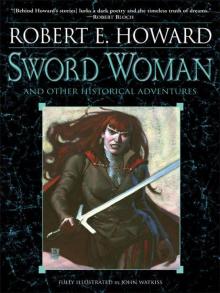 Sword Woman and Other Historical Adventures
Sword Woman and Other Historical Adventures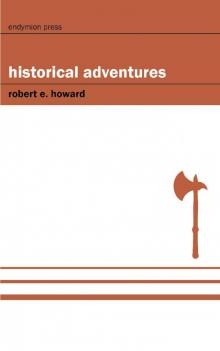 Historical Adventures
Historical Adventures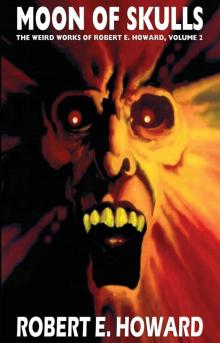 Moon of Skulls
Moon of Skulls The Robert E. Howard Omnibus: 97 Collected Stories
The Robert E. Howard Omnibus: 97 Collected Stories The Pirate Story Megapack: 25 Classic and Modern Tales
The Pirate Story Megapack: 25 Classic and Modern Tales The Best of Robert E. Howard, Volume 2
The Best of Robert E. Howard, Volume 2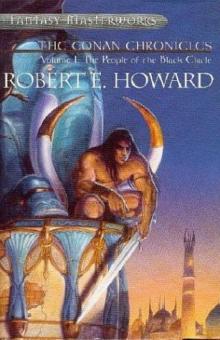 The Conan Chronicles, Vol. 1: The People of the Black Circle
The Conan Chronicles, Vol. 1: The People of the Black Circle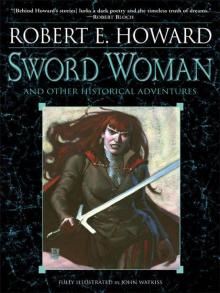 Sword Woman and Other Historical Adventures M
Sword Woman and Other Historical Adventures M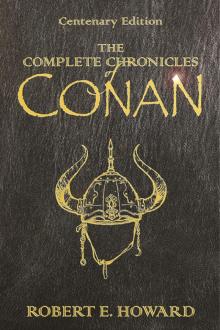 The Complete Chronicles of Conan
The Complete Chronicles of Conan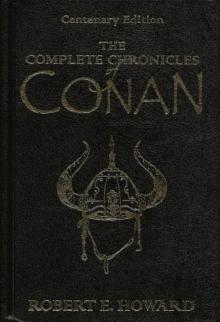 Conan the Barbarian: The Chronicles of Conan (collected short stories)
Conan the Barbarian: The Chronicles of Conan (collected short stories)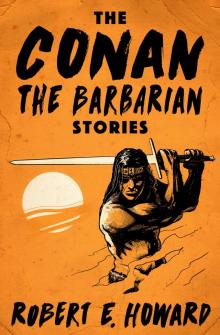 The Conan the Barbarian Stories
The Conan the Barbarian Stories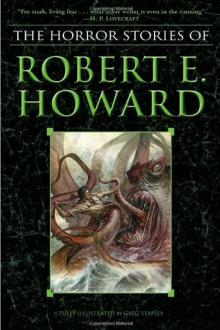 The Best Horror Stories of
The Best Horror Stories of Tigers Of The Sea cma-4
Tigers Of The Sea cma-4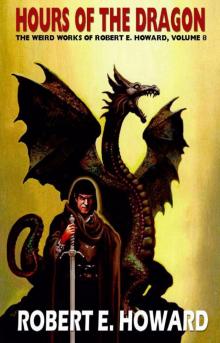 The Hours of the Dragon
The Hours of the Dragon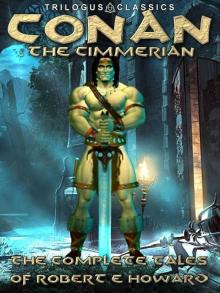 Conan the Cimmerian: The Complete Tales (Trilogus Classics)
Conan the Cimmerian: The Complete Tales (Trilogus Classics)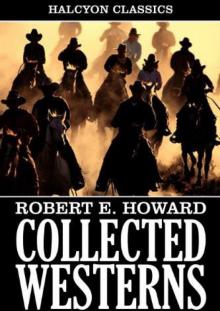 Collected Western Stories of Robert E. Howard (Unexpurgated Edition) (Halcyon Classics)
Collected Western Stories of Robert E. Howard (Unexpurgated Edition) (Halcyon Classics) The Best of Robert E. Howard, Volume 1
The Best of Robert E. Howard, Volume 1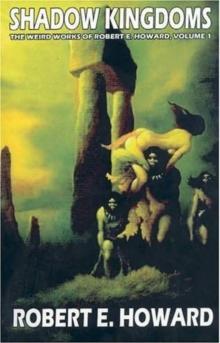 Shadow Kingdoms
Shadow Kingdoms